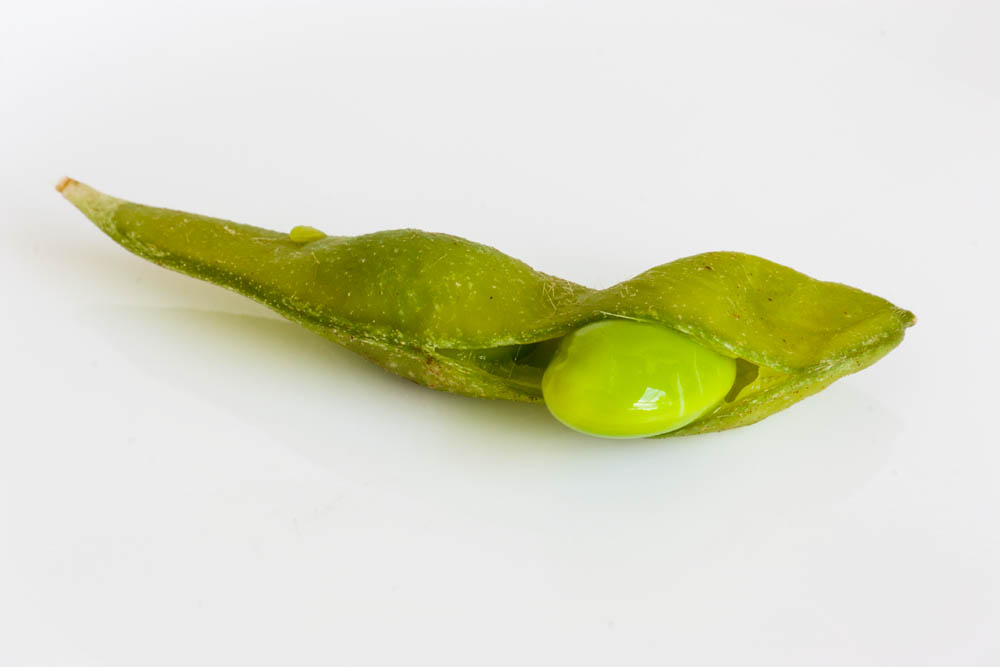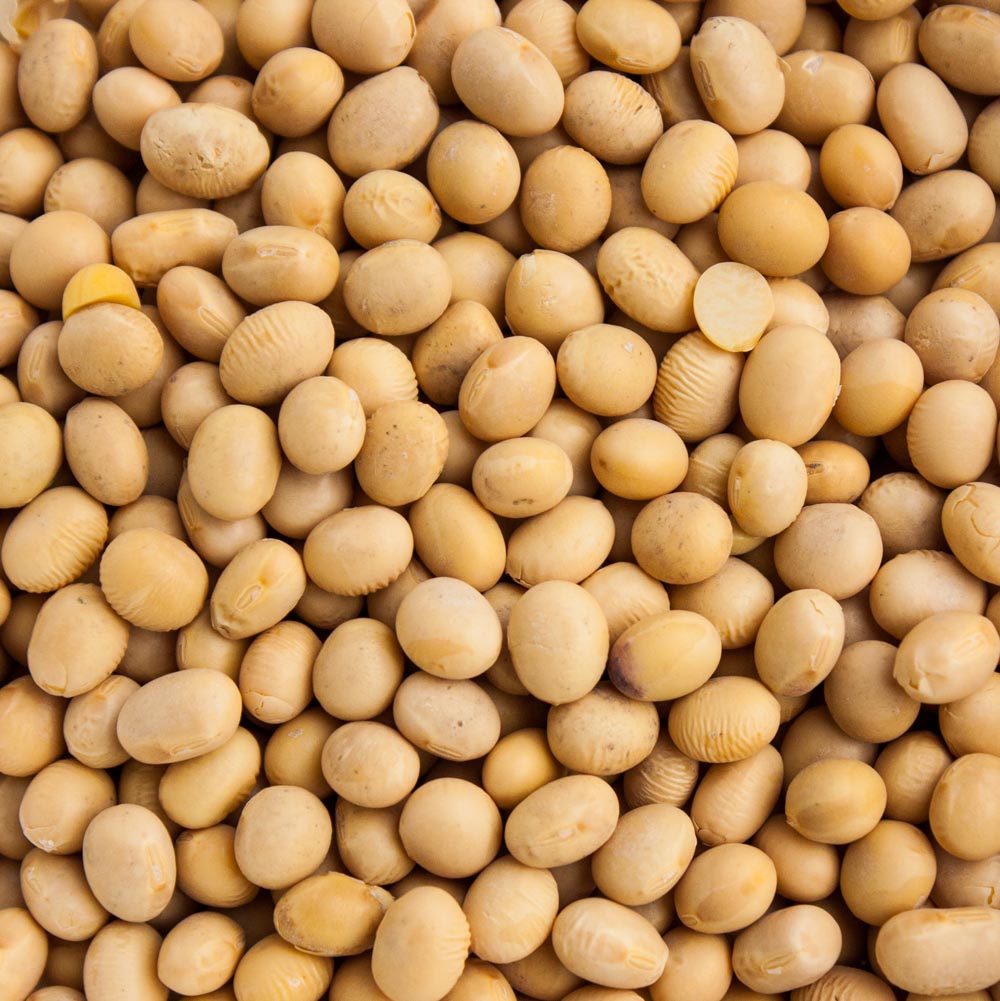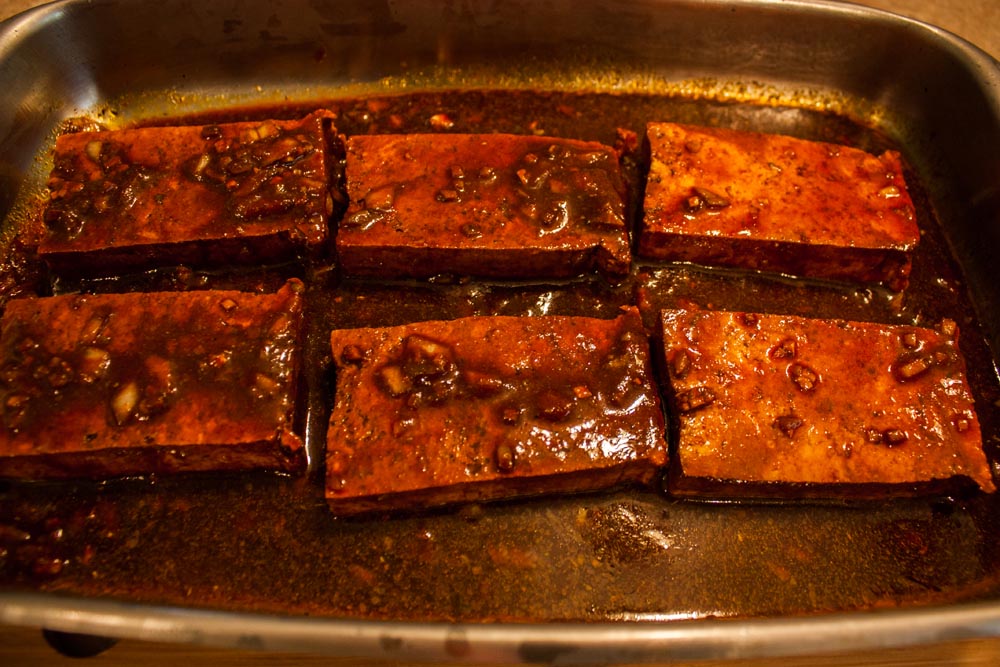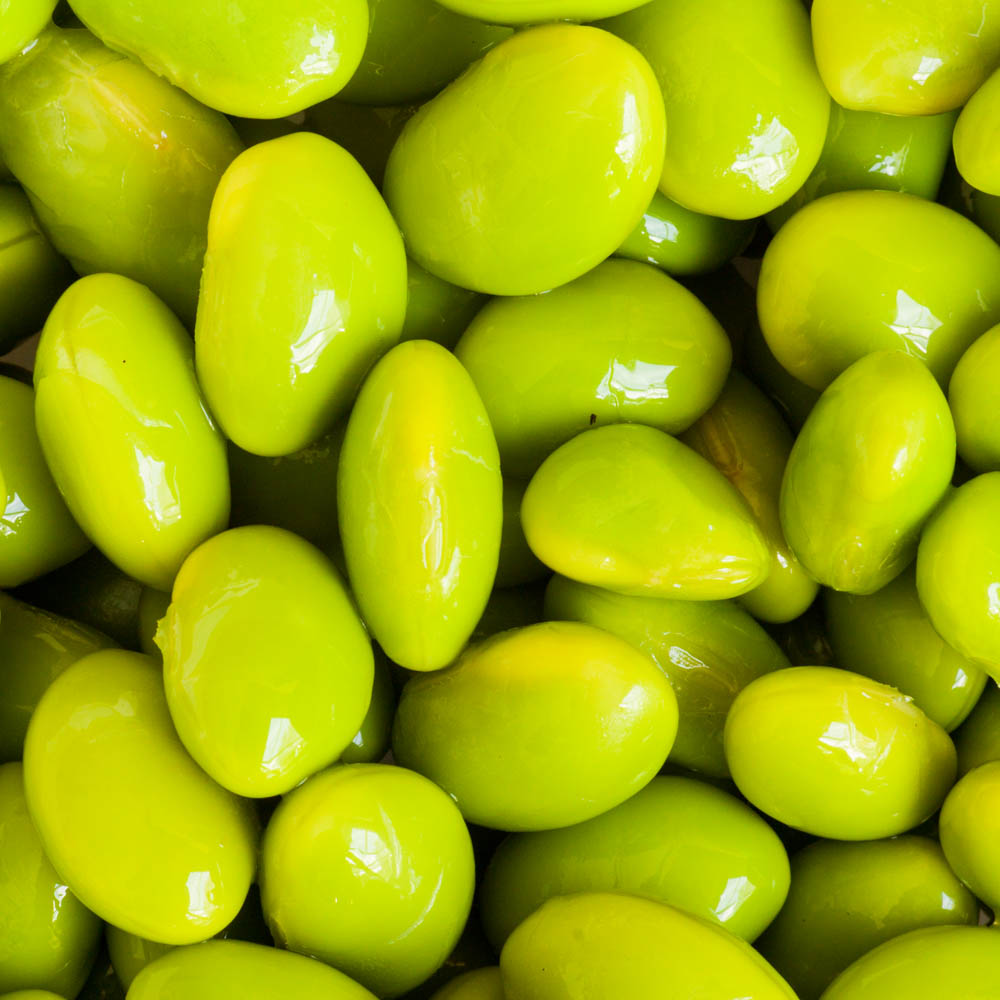Fresh soy is clearly a healthy food
The health benefits of eating fresh soy should no longer be debated. The evidence is clear. Many large population and laboratory studies show soy reducing cancer rates, increasing overall health and increasing longevity.
Soy is a legume. All legumes supply a wide variety of minerals, vitamins and other necessary nutrients. Legumes are also a great source of both kinds of dietary fiber.
Soy has other advantages over most legumes. Both fresh and dried beans are high in easily digestible protein. Soy is unique in supplying all of the amino acids we need to make complete protein. It is widely available in many different forms even in large chain supermarkets. And each type of soy product has its own flavor, texture and nutritional properties to offer every healthy whole food diet.

My favorite way to eat fresh soy beans is to squeeze the beans out of the pods. The pods are lightly steamed or blanched first. Frozen pods are usually ready to eat as soon as they are thawed.
The different ways to eat fresh soy
Fermented soy products probably come to mind first. Everyone has heard of miso and soy sauce. Less familiar are tempeh, tamari, shoyu and natto. Except for natto and shoyu, these are all readily available in most areas. The advantages of fermented soy are vitamin B12 and probiotic activity. Live probiotics are only in unpasteurized products and difficult to find because of government regulations. Vitamin B12 is a by-product of the fermentation process and content is usually negligible.
Fresh soy is steadily gaining popularity. Fresh whole beans, dried soy beans and tofu are all widely sold. Adding fresh soy increases variety and boosts whole food health.
Fresh beans are called edamame. They can be still in the pod like green peas, either in the freezer section or more rarely fresh in the produce department. Edamame are usually shelled and ready to eat. These firm but tender green beans make a great snack.
Soy milk is in every dairy department. It is a more highly processed product still containing most of the nutrient of whole soy. Read the label carefully before buying soy milk. Many ingredients are added to make it “better”. There are almost always guar gum, carrageenan or other conditioners to make it smoother and keep it from separating. It is often flavored. Soy milk without sweeteners can be hard to find. And it has most of the fiber left.
Tofu is the most popular fresh soy food. It is produced by coagulating soy milk and compressing the curds that form. The process is similar to making dairy cheese. The usual coagulant is a salt, either calcium sulfate, magnesium chloride or calcium chloride.
Whole dried soy beans are prepared like any other legume. Soak for several hours or overnight in water. Drain and rinse them. Then boil them in fresh water until tender. The last step is to drain off the cooking water.

Dried soy beans are prepared like any other legume. They have the advantage of containing complete protein.
Why do many people think fresh soy is unhealthy?
All of the arguments used against soy have been debunked. Like every whole food, soy is not perfect. But every legitimate study shows many health benefits for those eating the most soy.
Some think we should not eat soy because it contains the same “anti-nutrients” as other beans. Phytates in legumes interfere with our ability to absorb some nutrients. This action of phytates applies particularly to iron and a few other minerals. But soy is so high in minerals that we still get a good dose even in the presence of phytates. Proper preparation of dried soy beans removes nearly all the the phytates. Phytates can also help prevent the formation of kidney stones.
Complex sugars in soy cannot be digested in the stomach or small intestine. These sugars are digested by the bacteria in the large intestine. This can lead to gas and bloating in some people. It is also very good for a healthy gut biome. These complex sugars are probably responsible for soy’s ability to lower colon and prostate cancer rates. Again, proper preparation of dried soy beans removes or breaks down most of these sugars.
Fresh soy contains phytoestrogens. They bind to the same cell receptors as human estrogen hormone. Their effect is not the same as the human hormone. Estrogen spurs cell growth and division. High estrogen levels are linked to increased risk of breast and other cancers. Increased soy consumption is linked to reduced cancer incidence. There is no proof that eating soy causes breast cancer and the opposite effect is well documented.
How to get more fresh soy into a healthy whole food diet?
My favorite way to eat fresh soy is to squeeze edamame beans out of the pods. This makes a great snack. Edamame are tender but firm, slightly nutty and just slightly sweet.
Tofu is a good substitute for animal protein in recipes. It has almost no flavor of its own. Tofu will readily absorb the flavors and aromas of whatever it is cooked with. Marinating tofu with your favorite flavors and then sauteing or baking it makes it more suitable for an entree item. Cooking also makes tofu firmer. Marinated cooked tofu can be added to other recipes and used to top salads.
Dried soy beans can be used like any other legume. Puree them with vegetables, herbs and spices to make a delicious dip. Add them to soups. Make dried soy beans part of a ragout. The puree also works well as a thickener for sauces.
Soy milk is a direct replacement for dairy milk in baking recipes. It can be used to make vegan bisques and other creamy soups and sauces. Use soy milk instead of other creamers in coffee.

This tofu is marinating in tamari, ginger, red chile pepper and lemon juice before baking. Marinating adds flavor and baking makes it firmer.
Fresh soy reference links
http://www.ncbi.nlm.nih.gov/pubmed/1503071
https://en.wikipedia.org/wiki/Tofu
http://drbenkim.com/soy-health.htm
http://www.med.umich.edu/umim/food-pyramid/soy.html


